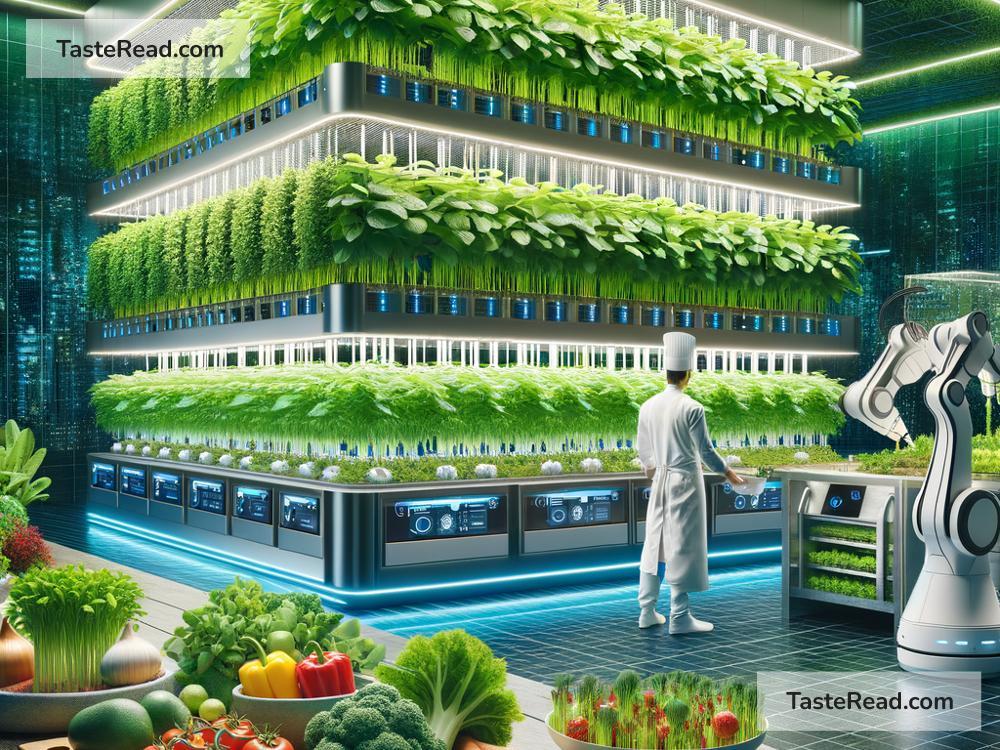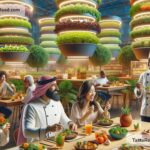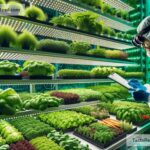The Future of Food: Sustainable Innovations for a Healthier Planet
Food is essential to life. It brings families together, powers our bodies, and connects us to cultures around the globe. But as our world grows, feeding everyone sustainably becomes more challenging. Climate change, population growth, and limited natural resources mean we must rethink how we produce, distribute, and consume food. Luckily, scientists, farmers, and innovators worldwide are working on groundbreaking solutions to create a future of food that is good for both people and the planet. Let’s explore how sustainable global innovations are shaping the way we eat.
The Problem: Feeding a Growing World
Today, the global population is over 8 billion people, and it’s expected to reach nearly 10 billion by 2050. That’s a lot of mouths to feed! At the same time, climate change is disrupting traditional crops, causing unpredictable weather patterns and reducing the amount of land that can be farmed. Overfishing is depleting ocean resources, and food waste is a serious issue—with around one-third of the food produced globally ending up wasted. If we continue down this path, food shortages and environmental damage could become the norm. Clearly, we need fresh ideas to make food systems sustainable.
The Solution: Sustainable Food Innovations
There’s good news. Around the world, people are coming up with exciting and practical ways to make food production cleaner, greener, and more efficient. Here are some of the most promising innovations that could redefine our future food systems:
1. Climate-Resilient Crops
Traditional crops like wheat, rice, and corn struggle in extreme weather conditions. Scientists are now developing climate-resilient crops that are better suited for unpredictable environments. For example, drought-resistant rice can survive with very little water, while heat-tolerant maize flourishes in scorching temperatures. By using advanced breeding techniques and genetic technology, researchers can help farmers grow food even in the face of climate challenges.
2. Vertical Farming
Imagine growing food in towering indoor buildings instead of fields. Vertical farming uses stacked layers to grow crops indoors using LED lights and hydroponic systems (plants grown without soil). This method uses less water, doesn’t require pesticides, and allows food to be produced closer to urban centers, reducing transportation costs and emissions. Vertical farms can provide fresh produce year-round and are especially useful in cities or countries with limited farmland.
3. Plant-Based Alternatives
Meat production, especially beef, has a huge environmental impact—it uses large amounts of water, land, and emits significant greenhouse gases. Plant-based meats, made from ingredients like soy, pea protein, or mushrooms, offer a sustainable alternative. These products mimic the taste and texture of meat while being kinder to the environment. Companies like Beyond Meat and Impossible Foods are leading the way, and their products are becoming more popular worldwide.
4. Lab-Grown Meat
If you love meat but worry about its environmental impact, lab-grown meat might be the answer. Scientists are growing real meat from animal cells in laboratories. This process eliminates the need for raising and slaughtering animals, saving land and water while drastically reducing greenhouse gas emissions. Though still expensive to produce, lab-grown meat is expected to become mainstream within the next decade.
5. Smart Farming Technology
Agriculture is undergoing a digital revolution. Farmers are now using drones, sensors, and artificial intelligence to monitor their crops and livestock. For example, drones can capture images of crops to identify diseases early, while sensors measure soil moisture to prevent overwatering. These tools help farmers increase efficiency, reduce waste, and produce better yields without straining the planet’s resources.
6. Reducing Food Waste
Nearly 1.3 billion tons of food are wasted globally each year. Innovations like edible food coatings can help extend the shelf life of fruits and vegetables, reducing waste. Apps and platforms are also connecting surplus food from restaurants and grocery stores to charities and consumers who can use it. Cutting down on food waste not only saves resources but also ensures more people have access to nutritious meals.
7. Alternative Proteins
To meet the world’s growing protein needs, new sources like insects and algae are gaining popularity. Rich in nutrients and much easier to produce than traditional livestock, these alternative proteins are sustainable options for the future. While insects like crickets may sound unusual to some, they’ve been part of diets in many cultures for centuries. Companies are finding creative ways to incorporate them into protein bars, flours, and snacks.
The Role of Everyone: Governments, Businesses, and Consumers
Creating a sustainable food future will take teamwork. Governments need to support research into eco-friendly farming practices and regulate industries to ensure environmental safety. Businesses must invest in innovative technologies and prioritize sustainability over short-term profits. And as consumers, we all have a role to play—choosing plant-based meals, reducing food waste at home, and supporting brands that are committed to the planet.
A Hopeful Future for Food
The future of food can be bright if we embrace change. Sustainable global innovations give us the tools to produce more food using fewer resources, protect our planet, and ensure that everyone has enough to eat. These changes won’t happen overnight, but every step we take brings us closer to a healthier, more sustainable world.
As we move forward, we can ask ourselves simple questions: How can we waste less? How can we make choices that support the environment? By working together, farmers, scientists, businesses, governments, and everyday people can build a food system that supports life—not just for today, but for generations to come. The future of food is in our hands, and we can make it delicious, sustainable, and promising for everyone.


